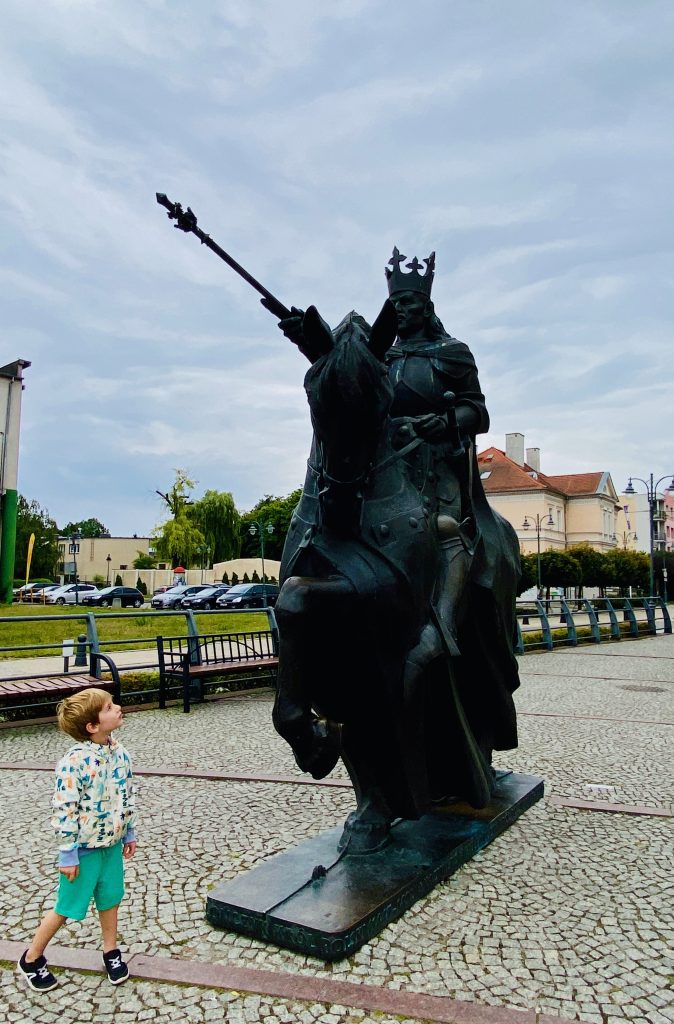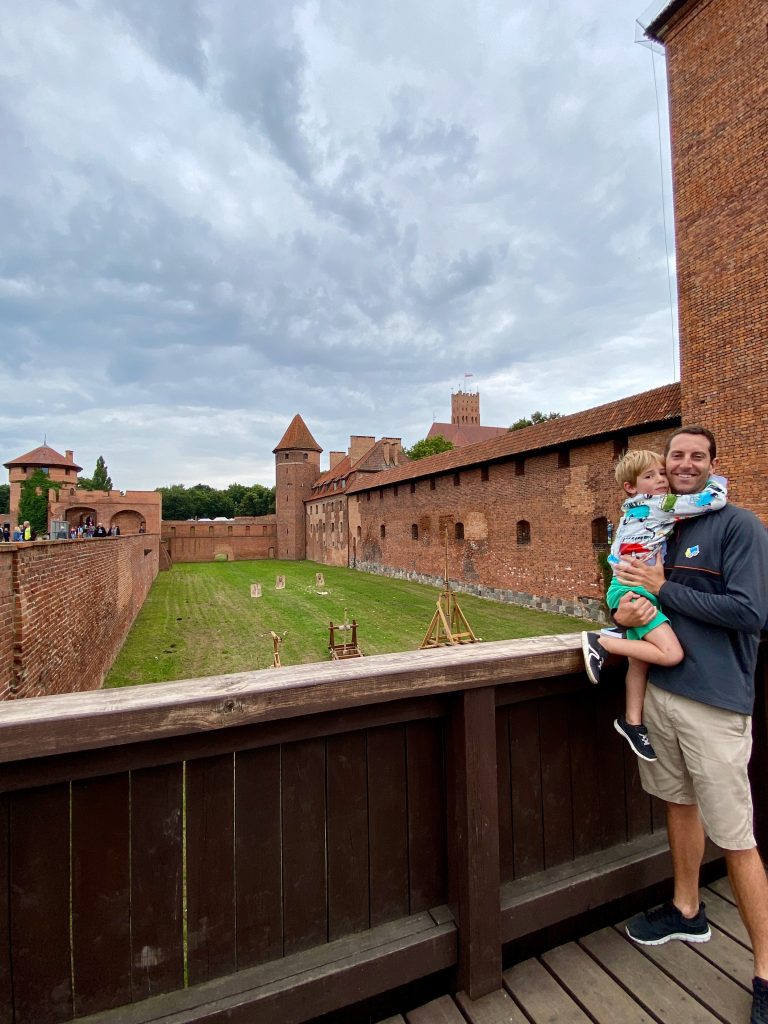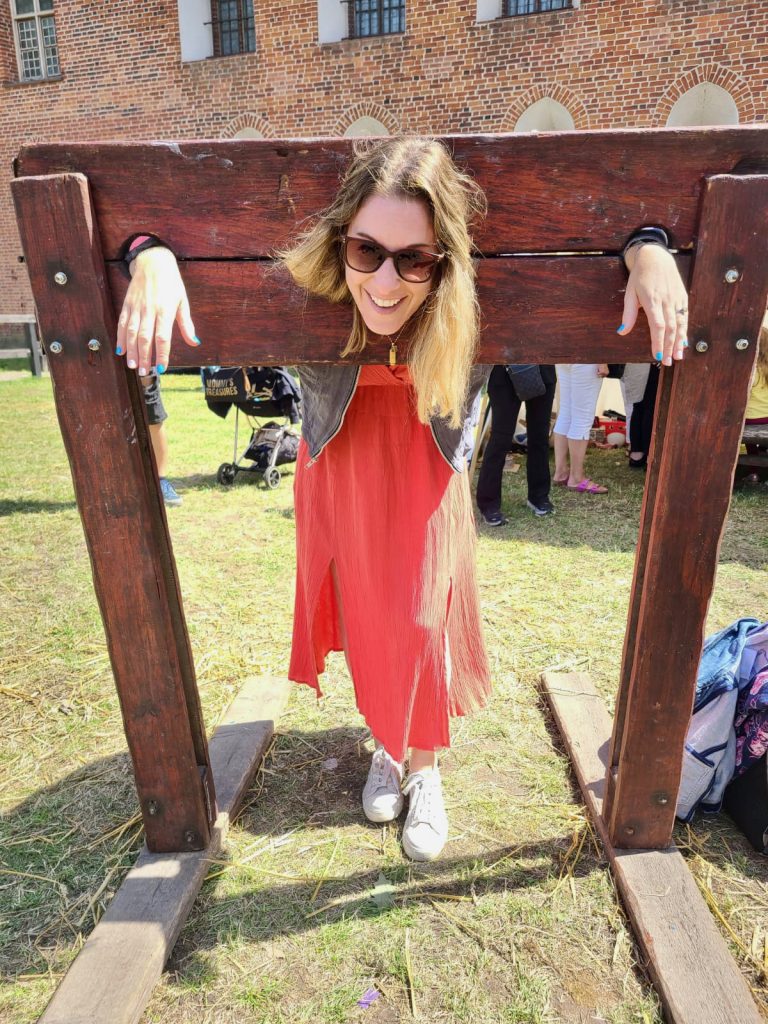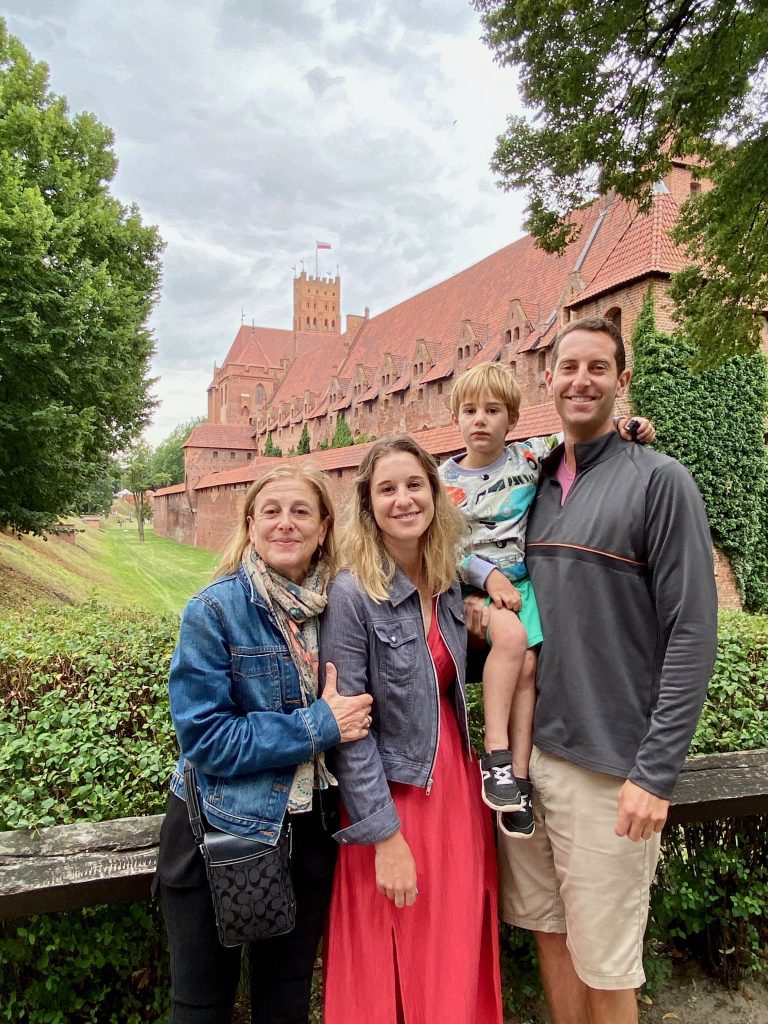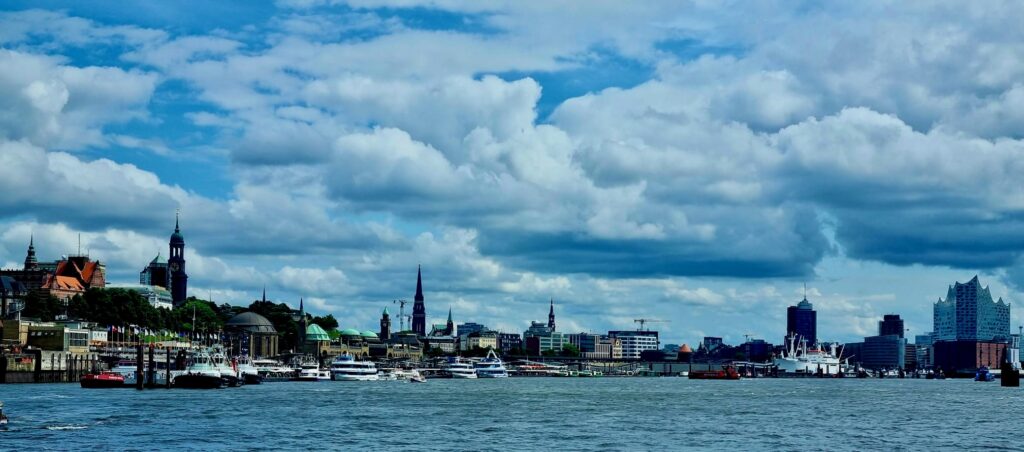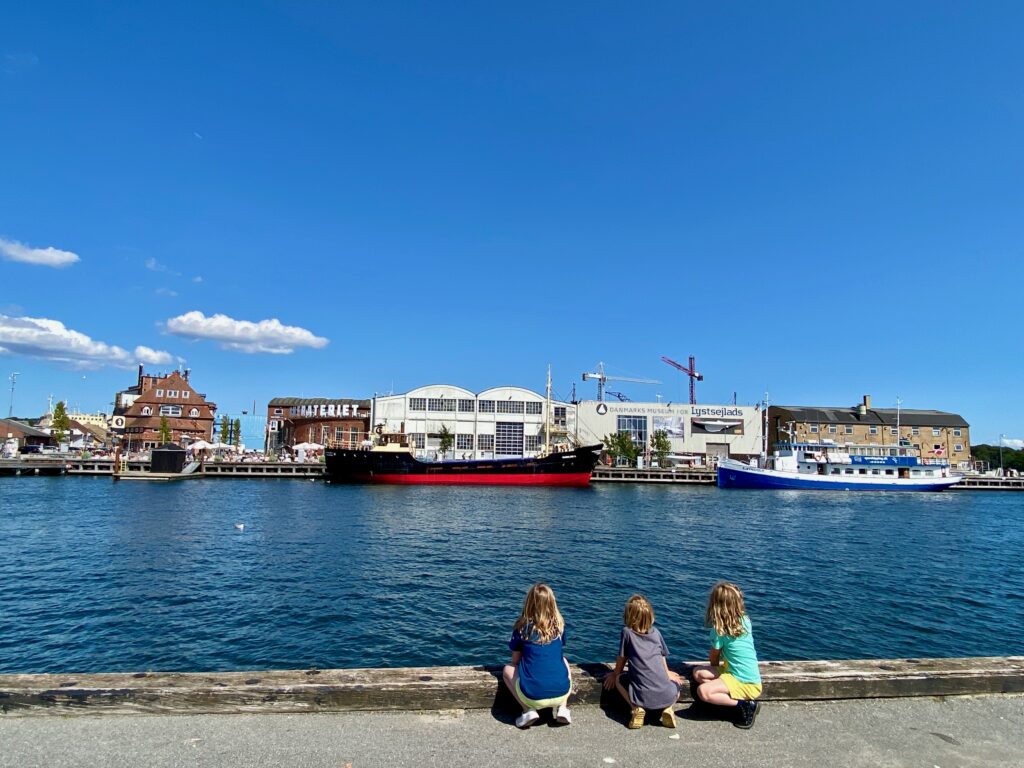After our week in Warsaw, we took a three-hour train ride to Gdańsk, another charming and intriguing city with a blend of cultures and architectural styles. Since it’s perched on the northern coast of Poland, it’s also a popular summer destination for Scandinavian, Russian, and German tourists (at one point it was a German city known as Danzig, but that’s another complicated story). It’s also where the Nazis first invaded Poland to begin WWII, and thus has a significant war and post-war history we didn’t know much about prior to spending time in and around the city. Gdańsk is actually one of three adjacent cities in a trifecta with Gdynia and Sopot, but since it wasn’t really beach weather, we opted to spend our time on Gdańsk, with one daytrip to the remarkable Malbork Castle.
We had a great Airbnb with views overlooking the Old Town, though we’re starting to realize the level of Airbnb hospitality really varies these days. Some places are fully stocked and super family-friendly, while others can’t even be bothered to provide basic cooking supplies (which definitely includes a coffee machine in my book when your kid still wakes up at 6:30am regardless of time zone or bedtime!).

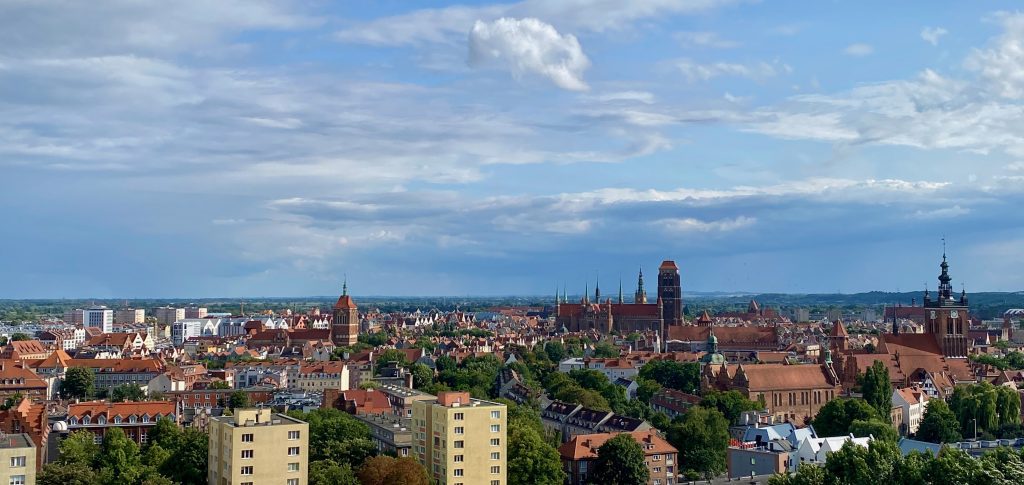
Completely unbeknownst to us, we happened to arrive the same weekend as the start of the annual St. Dominic’s Fair, an arts, food, and street festival that overtakes the city for two weeks. Although it made things more crowded, it provided enjoyable opportunities for easy eats (always preferred to a sit-down restaurant meal with a 4-year-old; not so much fast casual in these parts) and also sampling the flavors of Polish and regional specialties.

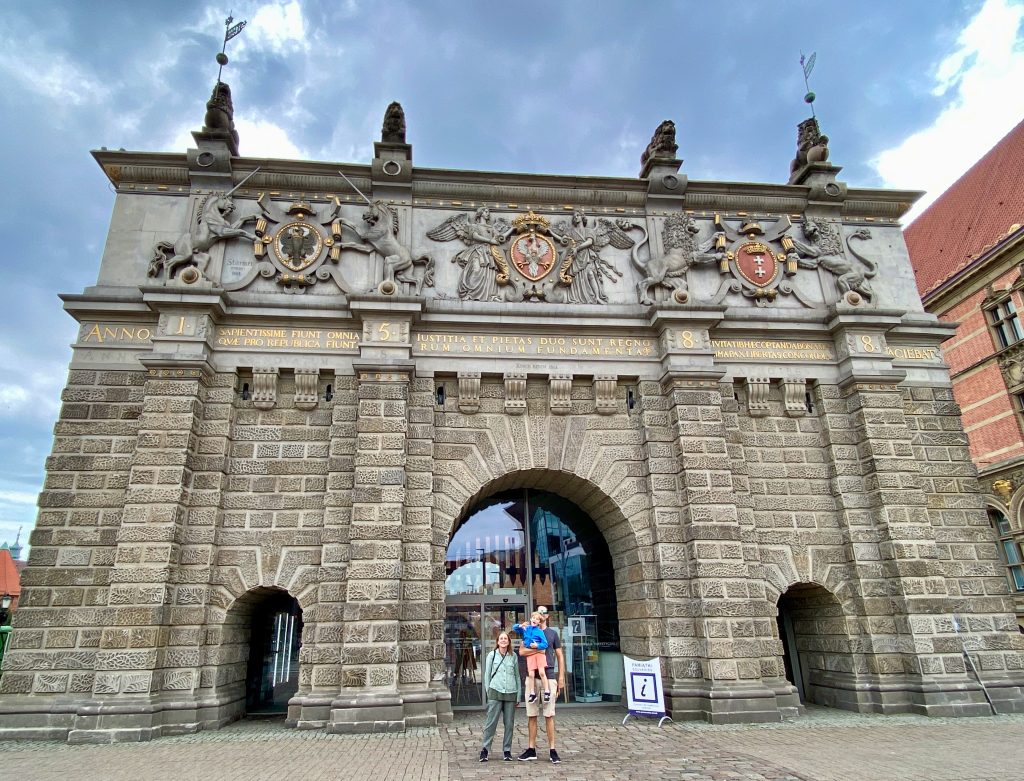




Other Gdańsk highlights included:
• renting a motorboat to explore the picturesque harbor areas. For only a one-hour rental, we got to see a different perspective of the city from the water.
• for Dave, visiting the WWII Museum, which he discovered has a heavy anti-Soviet bent.
• Solidarity Museum – tracing the post-WWII Communist republic, Gdańsk shipyard workers’ strikes under the leadership of Lech Walesa, and decades-long labor and social movement struggles to dismantle the Polish Communist system. Understandably this was not super fascinating to Jacob but luckily the Solidarity Museum does have a children’s play area which is a welcome alternative (though for a small separate fee).
• celebrating Nana’s birthday over Spanish tapas in Poland, of all things

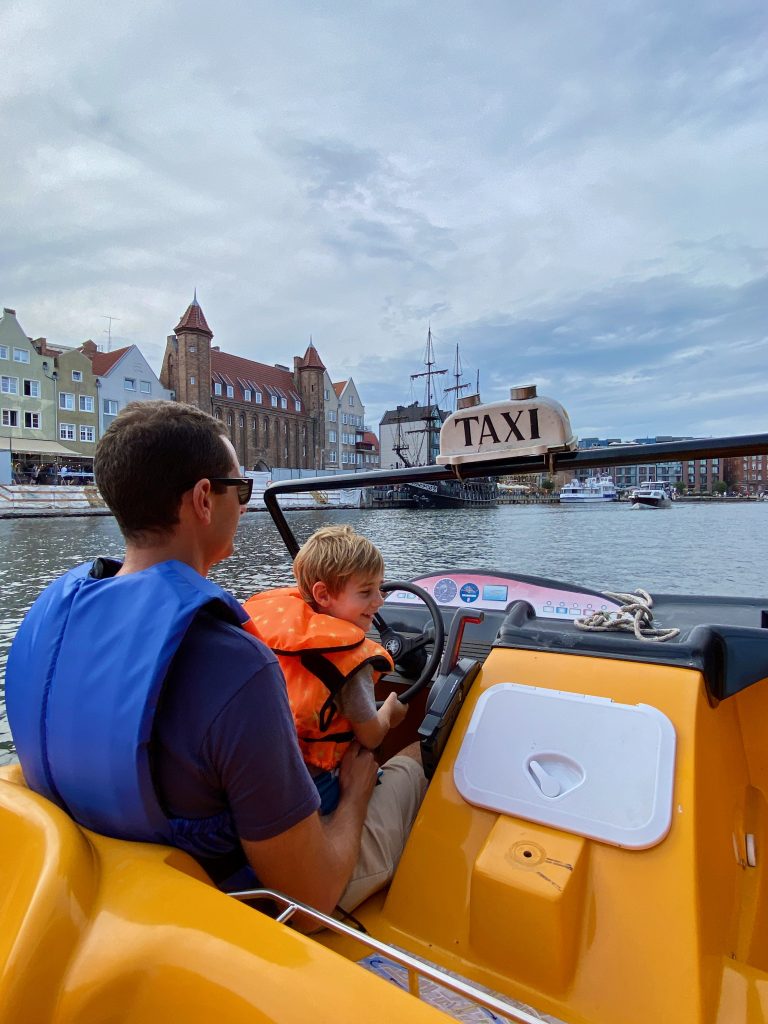
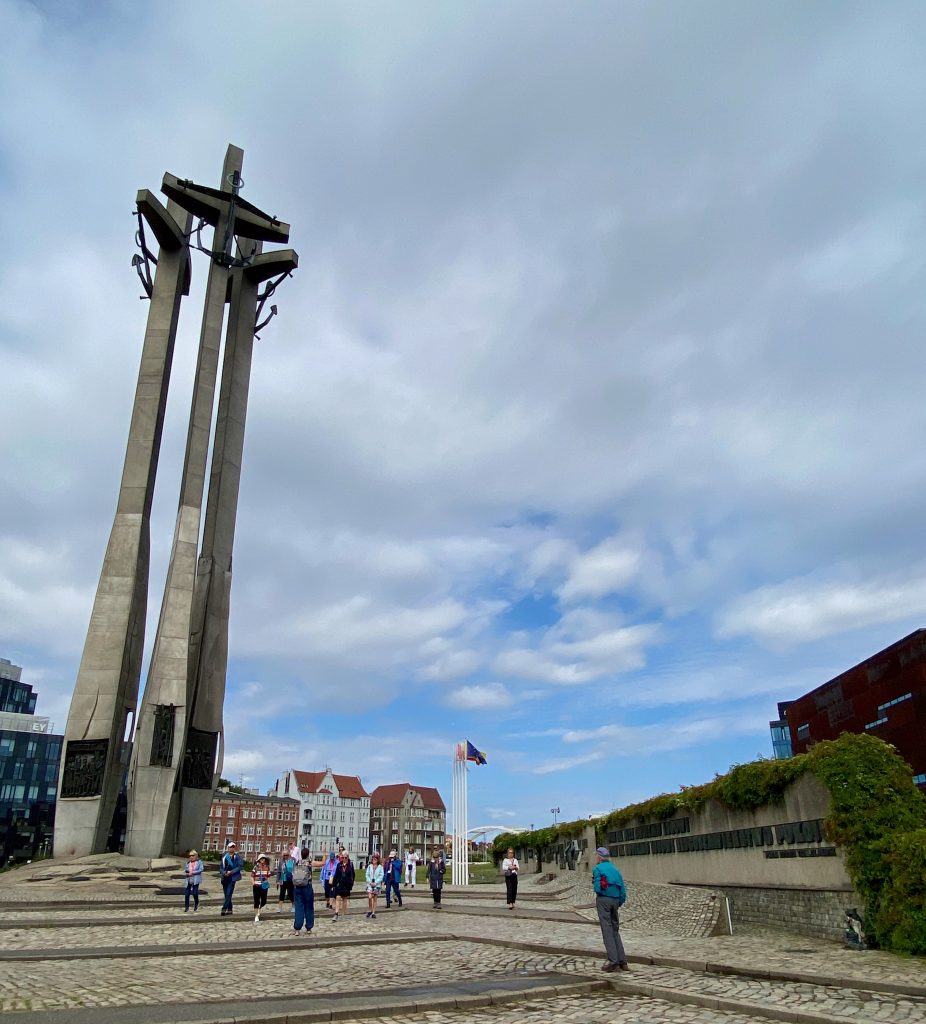
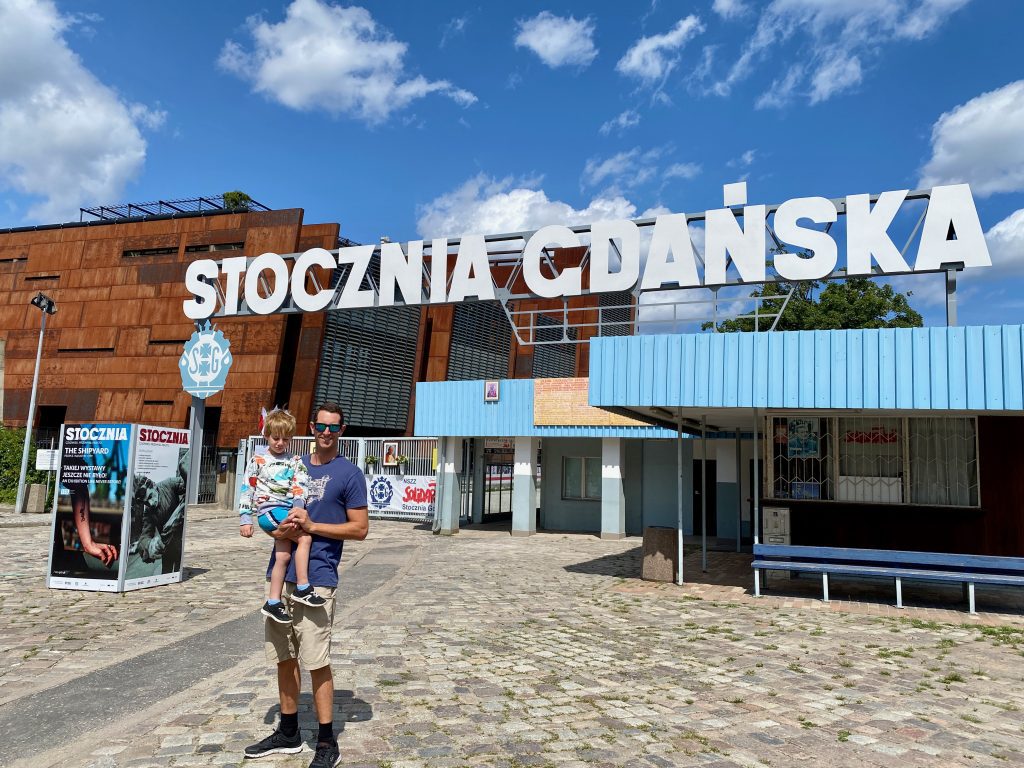
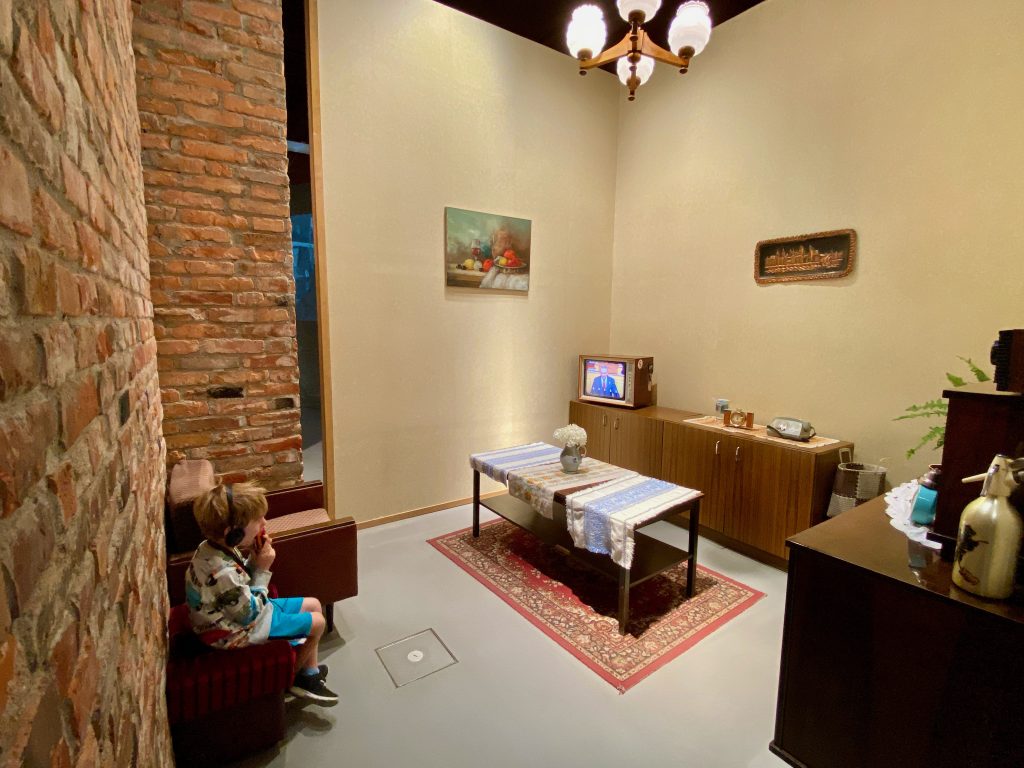

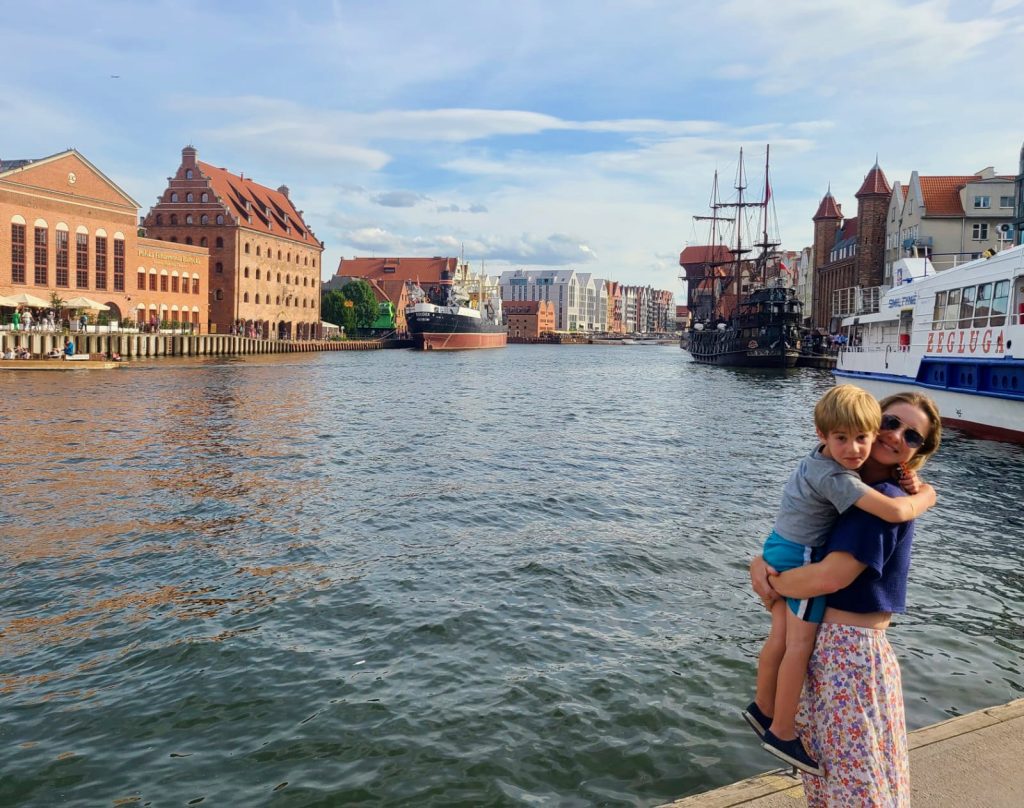
We all really enjoyed the daytrip by train to the scenic Malbork Castle to explore this 13th century medieval castle and fortress (half of which was destroyed during WWII but later reconstructed). We had fun playing around at medieval fair-type activities and games as well as food trucks for lunch, as this is a lovely summer spot for visiting families.
